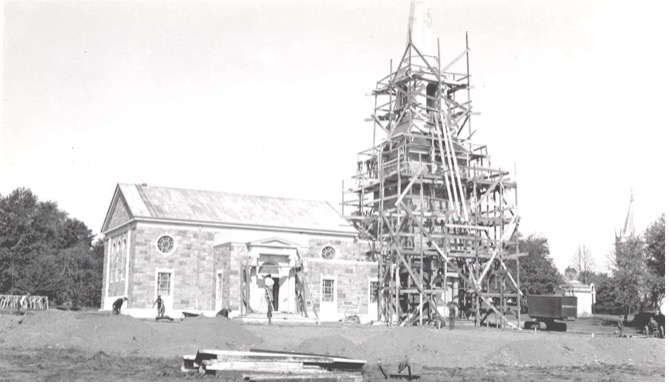
Founded in 1863, Woodlawn Cemetery is recognized as one of the most historically significant properties in America. It’s the final resting place of leaders, legends, and loved ones whose lives have touched our own. Its memorials represent the largest and finest collection of funerary art in the country. Its surroundings include a lake, hills, meadows, mature trees, streams, and curved pathways overlooking the Bronx River.
With a main entrance located at 4199 Webster Ave and the Jerome Ave. entrance found at Jerome Ave & Bainbridge Ave, Woodland has since expanded to 400 acres with over 310,000 individuals laid to rest. The National Park Service has described our urban oasis as “a resting place for the famous and powerful.”
But let’s pause for a moment and go back to the beginning. To a time when a group of prominent New Yorkers wanted burial to be more accessible to Manhattanites.
 Designed as a rural cemetery by James C. Sidney, cemetery trustees soon favored a lawn cemetery style to accommodate monuments and mausoleums. The landscape-lawn style was made popular after the Civil War and emphasized the relationship between landscape and classical architecture.
Designed as a rural cemetery by James C. Sidney, cemetery trustees soon favored a lawn cemetery style to accommodate monuments and mausoleums. The landscape-lawn style was made popular after the Civil War and emphasized the relationship between landscape and classical architecture.
The curvilinear road system provides visitors views of large, singular monuments on family plots and circular lots. With its favorable location and wealthy clientele, Woodlawn quickly grew to become the outdoor showplace of distinctive masterworks you see today.
The cemetery’s natural environment is just as impressive. The park-like setting is home to an extensive array of flora, fauna, birds, and insects as well as serving as a refuge for local wildlife. Its horticultural beauty is evident in the extraordinary collection of specimen plants, including five of New York City’s “Great Trees.”
In 2011, Woodlawn Cemetery was honored to receive National Historic Landmark status. The cemetery now welcomes over 100,000 visitors from across the world each year who enjoy our trolley tours and the peaceful serenity of our arboretum, which has received internationally recognized Level II Accreditation.
Our historic Woolworth Chapel, designed by architect Robertson Ward in 1934 and funded by Fred and Velma Woolworth, features terrazzo marble floors and a one-of-a-kind bell tower.
A recent renovation has made the Chapel’s cremation witnessing area more appealing. A large skylight brings in natural light that reflects upon the wood. Even on a cloudy day, you can still see sunlight in our witnessing area, which comfortably fits a small group. We installed video equipment so families could witness the start of the cremation from a monitor upstairs.
The intentions of the past, present, and future converge at Woodlawn, reflecting a broad spectrum of American history, heritage, and culture. In addition to being a historical masterpiece, Woodlawn offers tours and events designed to educate and connect the past with the present. Woodlawn also serves as an outdoor environmental classroom as many come to view and study the more than 140 varieties of trees in our newly designated arboretum.
Visitors are welcome to take a guided tour of the cemetery or to photograph the grounds, which are open seven days a week from 8:30 a.m. to 4:30 p.m. Check our website for details about planning a visit and contact us anytime with questions.
